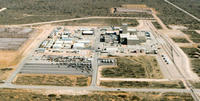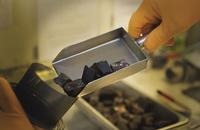-
Snowden revelations spur a surge in encrypted e-mail services
The Edward Snowden revelations about National Security Agency(N.S.A) surveillance programs have fueled a surge of new e-mail encryption services. “A lot of people were upset with those revelations, and that coalesced into this effort,” said the co-developer of a new encrypted e-mail service which launched last Friday. The company notes that its servers are based in Switzerland, making it more difficult for U.S. law enforcement to reach them.
-
-
Hitting the reset button on Secure Communities
Last Tuesday law enforcement officials said they anticipate a “reboot” of the controversial immigration enforcement program, Secure Communities, in which police officers are asked to submit fingerprints taken by police to DHS so the individuals stopped by the police can be screened for deportation eligibility. Critics argue the program leads to too many low-level criminals and non-criminals being turned over to immigration authorities, and in addition to the cost involved in the process, the program could make witnesses and victims of crime reluctant to cooperate with law enforcement.
-
-
Converting light to sound for better weapons detection, medical imaging
A device that essentially listens for light waves could help open up the last frontier of the electromagnetic spectrum — the terahertz range. So-called T-rays, which are light waves too long for human eyes to see, could help airport security guards find chemical and other weapons. They might let doctors image body tissues with less damage to healthy areas. They could also give astronomers new tools to study planets in other solar systems. Those are just a few possible applications.
-
-
New Mexico demands clarifications, reassurances on WIPP radiation leaks

New Mexico’s environment secretary Ryan Flynn has ordered the Department of Energy (DOE) to explain how it will protect public health and the environment while it investigates a radiation leak at the underground Waste Isolation Pilot Plant (WIPP). The plant has not been in compliance with various permit requirements since the February underground fire and radiation leak, which eventually led to a plant shutdown.
-
-
Problems continue to plague the Oxide Conversion Facility at Y-12

Oxide conversion is critical to recycling weapons-grade uranium, making it useful in nuclear warheads or for other purposes. The Oxide Conversion Facility (OCF) at the Y-12National Security Complex has been operating inconsistently in recent years. A report by the staff of the Defense Nuclear Facilities Safety Board(DNFSB) said there was a plan to resume operations the week of 7 April 2014, but that did not happen.
-
-
New technology tests ammo while saving joints
Firing and testing thousands of rounds of ammunition weekly can challenge the human body — even ones in top physical condition — causing debilitating stress injuries and chronic nerve and joint pain. DHS Science and Technology Directorate (S&T), with the help of agents from ICE Office of Firearms and Tactical Programs (OFTP) Armory Operations Branch (AOB), has taken an important step forward in reducing or eliminating these injuries by developing of the “Virtual Shooter.”
-
-
UN mulling rules to govern autonomous killer robots
On Tuesday, delegates from several international organizations and governments around the world began the first of many round of talks dealing with some call “lethal autonomous weapons systems” (LAWS), and others call “killer robots.” Supporters of LAWS say the technology offers life-saving potential in warfare, as these robots y are able to get closer than troops to assess threats without letting emotions interfere in their decisions. This is precisely what concerns critics of the technology. “If we don’t inject a moral and ethical discussion into this, we won’t control warfare,” said one of them.
-
-
Texas cities adopt 911 texting

Adding to the rising number of U.S. cities that accept 911 emergency texts, North Texas public safety agencies will now institute the procedure at their response centers. 911 emergency texting not only helps the deaf, but it better caters to younger generations that do not recognize as much the divide between text and voice communications. The texting of additional media such as photos before the responders reach the site could also have a profound impact on the development of an emergency situation.
-
-
DOJ, NIST team up to shore up forensic science, but skeptics question effort
Five years ago, a report on the state of forensic science by the National Academy of Sciences decried the lack of sound science in the analysis of evidence in criminal cases across the country. It spurred a flurry of outrage and promises, but no immediate action. Now, renewed efforts are underway, with the Department of Justice (DOJ) and the National Institute of Standards & Technology (NIST) teaming up to create a National Commission on Forensic Science.
-
-
Colorado tries to increase safety of urban development in wildfire-prone areas
Colorado continues to deal with the challenge of building new urban developments while reducing wildfire risks. There are currently 556,000 houses built in burn zones around the state, and the demand for water to sustain residents and industries continue to rise. A new study predicts that development will occupy 2.1 million acres in wildfire-prone forests by 2030, an increase from one million acres today — just as wildfires continue to burn roughly 900,000 acres a year since 2000, compared with just 200,000 acres a year in the 1990s.
-
-
Pandemics: who should be given life-saving treatment first? Who should make the decision?
In the event of a flu pandemic, who should have priority access to life-saving ventilators, and who should make that determination? Few disaster preparedness plans have taken community values regarding allocation into account, but a new study is aiming to change that through public engagement with Maryland residents. “In the event of a healthcare crisis, understanding the community perspective and having citizen buy-in will be critical to avoid compounding the initial disaster with further social upheaval,” says the principal investigator.
-
-
Improving gloves to enhance first responders’ safety
Firefighters wear protective gloves called “structure gloves” to keep their hands safe on the job. The structure gloves currently used by firefighters, however, are not designed for the precision movements first responders must perform. There are many different types of structure gloves available, but none fully satisfies modern firefighters’ needs. Today’s compact tools often have small buttons that require nimble movements. Bulky gloves can make it difficult for firefighters to complete simple tasks without removing their gloves and compromising their safety. As advanced textile technology and materials continue to develop, the science behind firefighter structure gloves has adapted.
-
-
Fire experiments will test new firefighting tactics
Fire researchers at the National Institute of Standards and Technology (NIST) will return to Spartanburg, South Carolina, on 15-21 May 2014, as part of a collaborative effort on a series of controlled-burn experiments in detached single-family homes slated for demolition. Measurements of temperature, total heat flux and other ground truth data gathered during the live fire experiments will help the NIST team and its partners to further assess the effectiveness of new fire-suppression tactics known as transitional fire attack.
-
-
Sandia completes overhaul of key nuclear weapons test facilities
Sandia National Laboratories recently completed the renovation of five large-scale test facilities that are crucial to ensuring the safety and reliability of the U.S. nuclear weapons systems. The work supports Sandia’s ongoing nuclear stockpile modernization work on the B61-12 and W88 Alt, assessments of current stockpile systems and test and analysis for broad national security customers.
-
-
Teams from U.S. service academies demonstrate potentially transformative technologies
DARPA’s mission is to ensure the technological superiority of U.S. military forces, and the agency continually seeks new sources of talent to accomplish that goal. The U.S. three military service academies are a promising source of that talent. The U.S. Air Force Academy team wins new competition — DARPA Service Academies Innovation Challenge — designed to encourage students at U.S. military academies to develop groundbreaking solutions to challenges facing the U.S. armed forces.
-
More headlines
The long view
Factories First: Winning the Drone War Before It Starts
Wars are won by factories before they are won on the battlefield,Martin C. Feldmann writes, noting that the United States lacks the manufacturing depth for the coming drone age. Rectifying this situation “will take far more than procurement tweaks,” Feldmann writes. “It demands a national-level, wartime-scale industrial mobilization.”
How Male Grievance Fuels Radicalization and Extremist Violence
Social extremism is evolving in reach and form. While traditional racial supremacy ideologies remain, contemporary movements are now often fueled by something more personal and emotionally resonant: male grievance.
The Surprising Reasons Floods and Other Disasters Are Deadlier at Night
It’s not just that it’s dark and people are asleep. Urban sprawl, confirmation bias, and other factors can play a role.
Why Flash Flood Warnings Will Continue to Go Unheeded
Experts say local education and community support are key to conveying risk.
